History of the Palace
The Palace of the Commonwealth and the adjacent Krasiński Garden are a complex that is characteristic of the Baroque period (French: entre cour et jardin). Built in the years 1688–1699 according to a design by Tylman van Gameren, the Palace was, in the unanimous opinion of its contemporaries, one of the most beautiful aristocratic palaces in Warsaw.
The construction of the Palace expressed great political ambitions of Jan Dobrogost Krasiński (1639–1717), Voivode of Płock and Starost of Warsaw. Like other noblemen, he sought to build a dazzling residence in Warsaw: one that would attest to the prestige of the Krasiński family and be as beautiful or even superior to the palace erected at the same time for King Jan III Sobieski in Wilanów.
The interior design and elements of the façade were intended to refer to the fabled origins of the Krasiński family, descendants of the legendary Roman patrician Marcus Walerius Corvinus. By emphasising their ancient origins – at that time a common thing among high-ranking Polish nobles – the family could increase their prestige and make known their high social and political aspirations. It was this principle that governed the sculptural decoration of the Palace, which is still admired to this day.

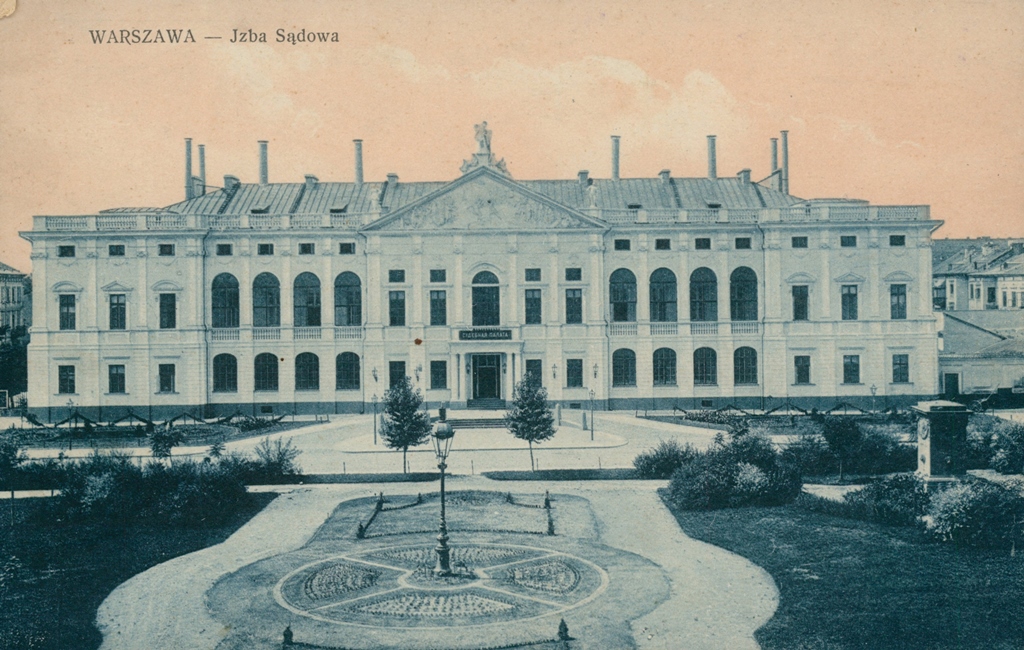
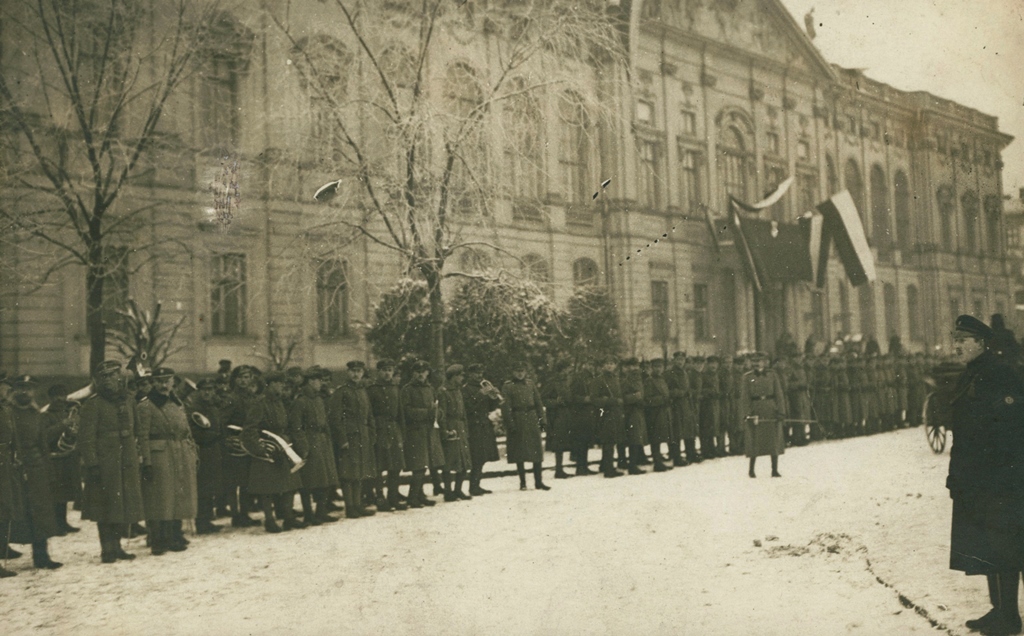
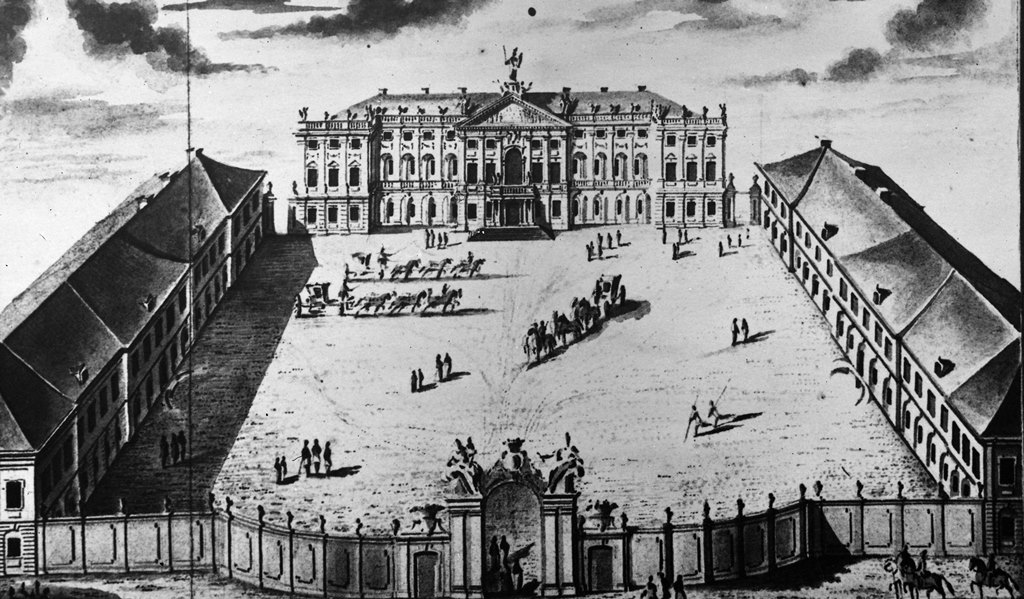
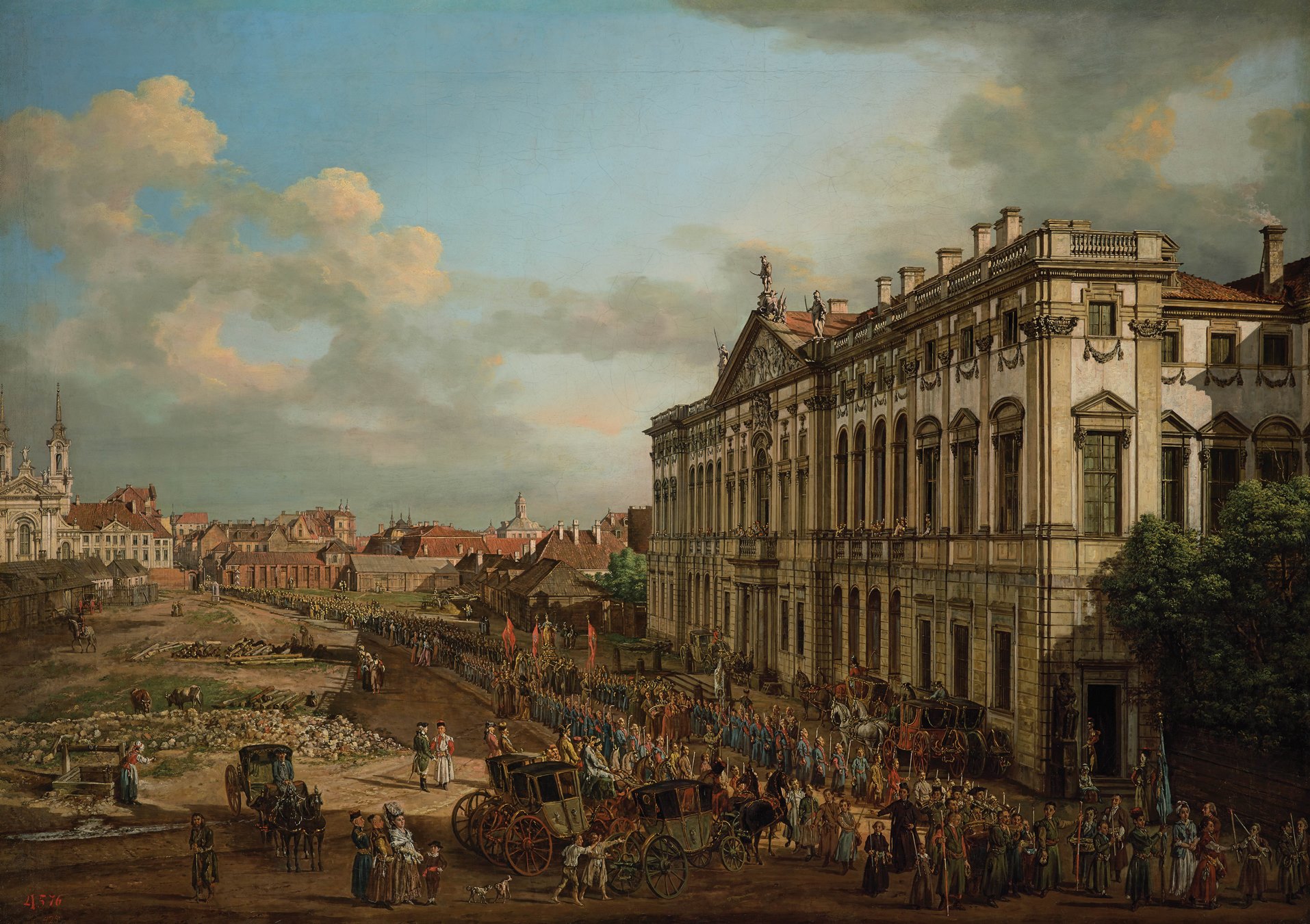


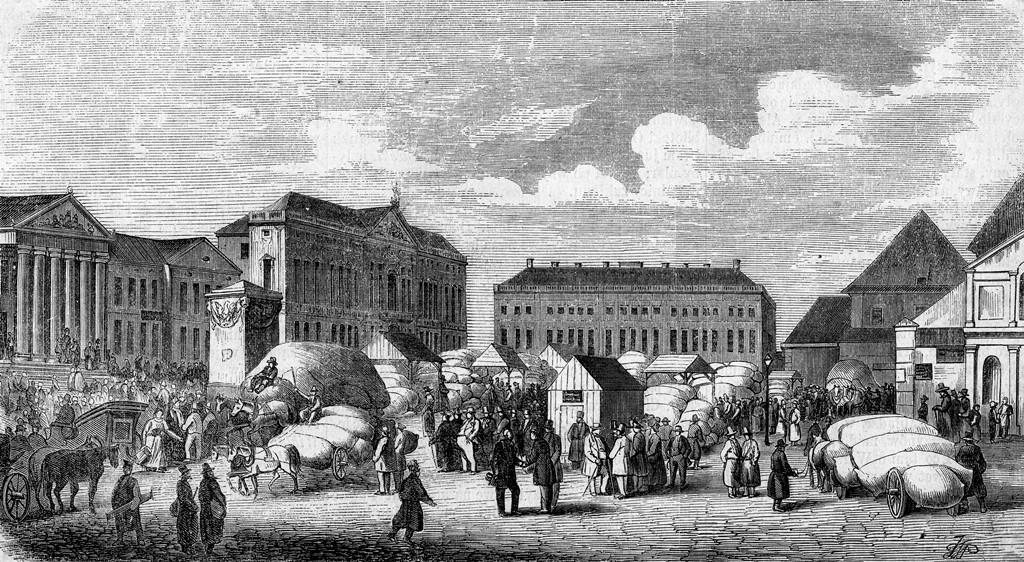
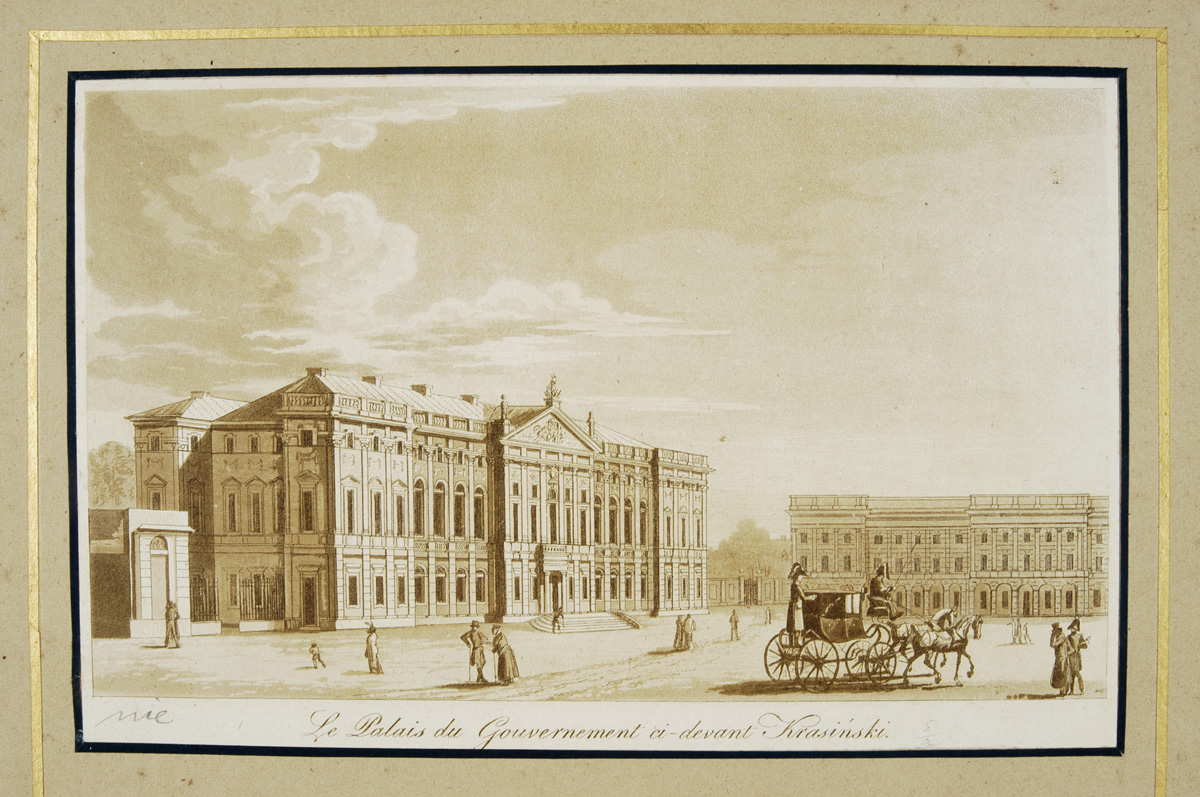
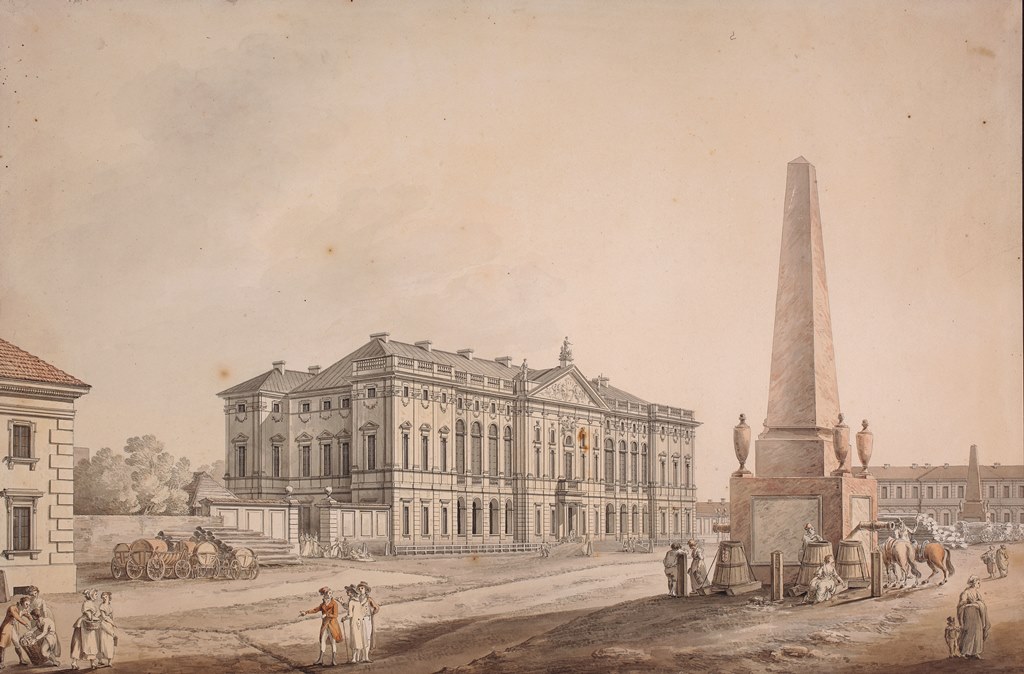
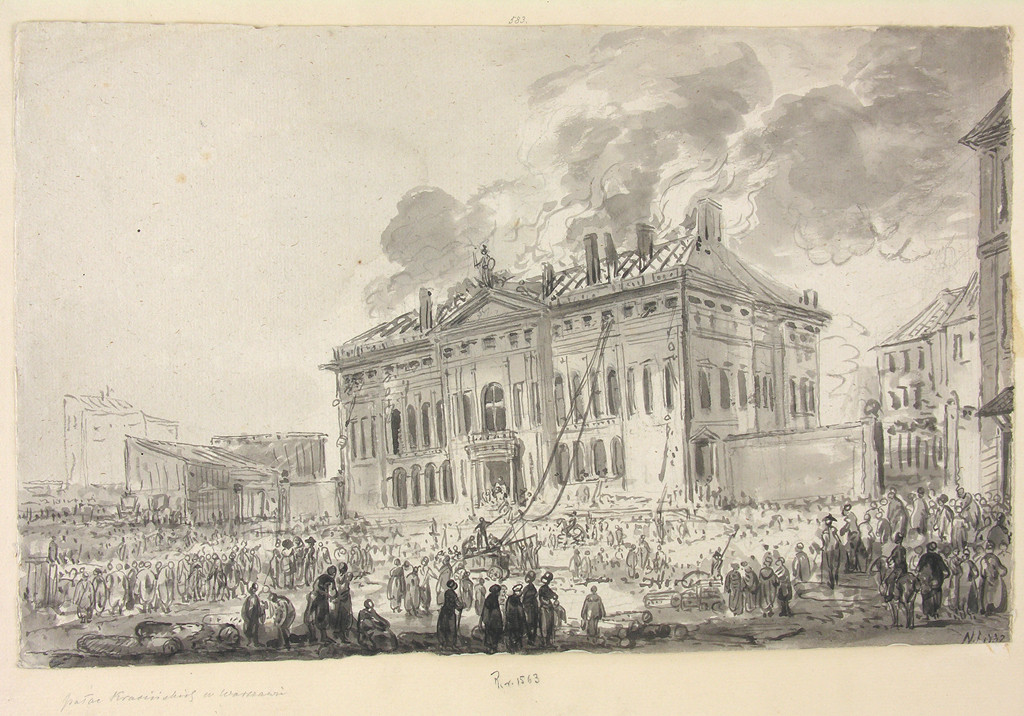






In 1765, the building previously known as the Krasiński Palace was purchased by the Crown Treasury Commission and became a government facility. From then on, the Palace would serve as a building for the most important state functions.
The building was rebuilt according to a design by Jakub Fontana in the early 1770s, but almost completely burned down in December 1782. It was restored according to a design by Dominik Merlini the following year. In 1796, after the Third Partition of Poland and the dissolution of the Polish state, the Palace hosted a scandalous ceremony in which allegiance was pledged to the Prussian king.
In the years 1807-1812, the building housed the offices of the Duchy of Warsaw. Later, during the Congress Kingdom of Poland (1815–1918), the Palace served first as the seat of Tsarist authorities offices (Council of State, Government Commission of Justice, Clearing House and the General Bank) and then, until the January Uprising (1863), as the place of residence of the head of the civil administration of the kingdom, margrave Aleksander Wielopolski. After the January Uprising, the Palace was taken over by the Tsarist judicature and housed the Russian Palace of the Courts of Justice.
During this period, it also became the object of ill-considered and unsightly modernisations that robbed it of its previous grandeur (among other things, the removal of the cartouche with the Krasiński family coat of arms).
At the end of World War I, the building was taken over by newly established Polish institutions. In January 1917, the Palace of the Commonwealth was handed over to the Polish Provisional Council of State in the Kingdom of Poland, the nucleus of Polish statehood. The Supreme Court had its seat in the Palace for the period of the Second Polish Republic (1918–1939). In 1929, the edifice was refurbished – a process that included, among other things, the installation of new cartouches featuring the coat of arms of the Republic.
World War II was the most tragic period in the building’s history. During the Warsaw Uprising, the Palace served as a defence post manned by the Scouting battalion ‘Parasol’. On 27 August 1944, three German planes dropped bombs that turned the residence into ruins.
Reconstruction began in 1948 and continued until 1961, when the Palace was given over to house the most valuable collections of the National Library that had survived the war.
In the years 2014–2016, the Palace underwent comprehensive refurbishment as part of the project ‘Conservation and revitalisation of the Krasiński Palace (Palace of the Commonwealth) in Warsaw – European 17th-century cultural heritage’, co-financed by the European Economic Area Financial Mechanism 2009–2014 and national funds.
Timeline
- 1688–1699 – The Palace is constructed upon a commission by the Voivode of Płock, Jan Dobrogost Krasiński; architect: Tylman van Gameren, sculptural decoration: Andreas Schlütter, painting work: Michelangelo Palloni
- 1765 – The Palace is purchased by the Commonwealth to serve as the seat of the Crown Treasury Commission
- 1766 – The Krasiński Garden is opened to the public
- 1766–1776 – The Palace is reconstructed according to a design by Jakub Fontana
- 1783 – The Palace is destroyed by fire and reconstructed according to a design by Dominik Merlini
- 1918-1939 – The Palace serves as the seat of the Supreme Court
- 1944 – A fire breaks out at the Palace during the Warsaw Uprising
- 1952–1961 – The Palace is reconstructed and given over as the seat of the National Library
- 1965 – The Palace is entered into the National Heritage Register
- 1994 – “Warsaw – the historic urban city complex with the Royal Route”, including the Palace of the Commonwealth, is recognised as a historic monument
- 2014 – Revitalisation work on the Palace begins
Bibliography:
1. S. Mossakowski, Pałac Krasińskich, Warsaw 1972
2. S. Mossakowski, ‘Tematyka dekoracji pałacu Krasińskich (1689–1699). Jej wzory literackie i plastyczne. Udział fundatora, architekta i rzeźbiarza’, Rocznik Biblioteki Narodowej 1994–1995, pp. 18–213. I.T. Baranowski, Kronika pałacu Krasińskich w Warszawie, Kraków 1880; source: National Library / POLONA www.polona.pl
4. I.T. Baranowski, Inwentarze Pałacu Krasińskich później Rzeczypospolitej, Warsaw 1910; source: National Library / POLONA www.polona.pl
